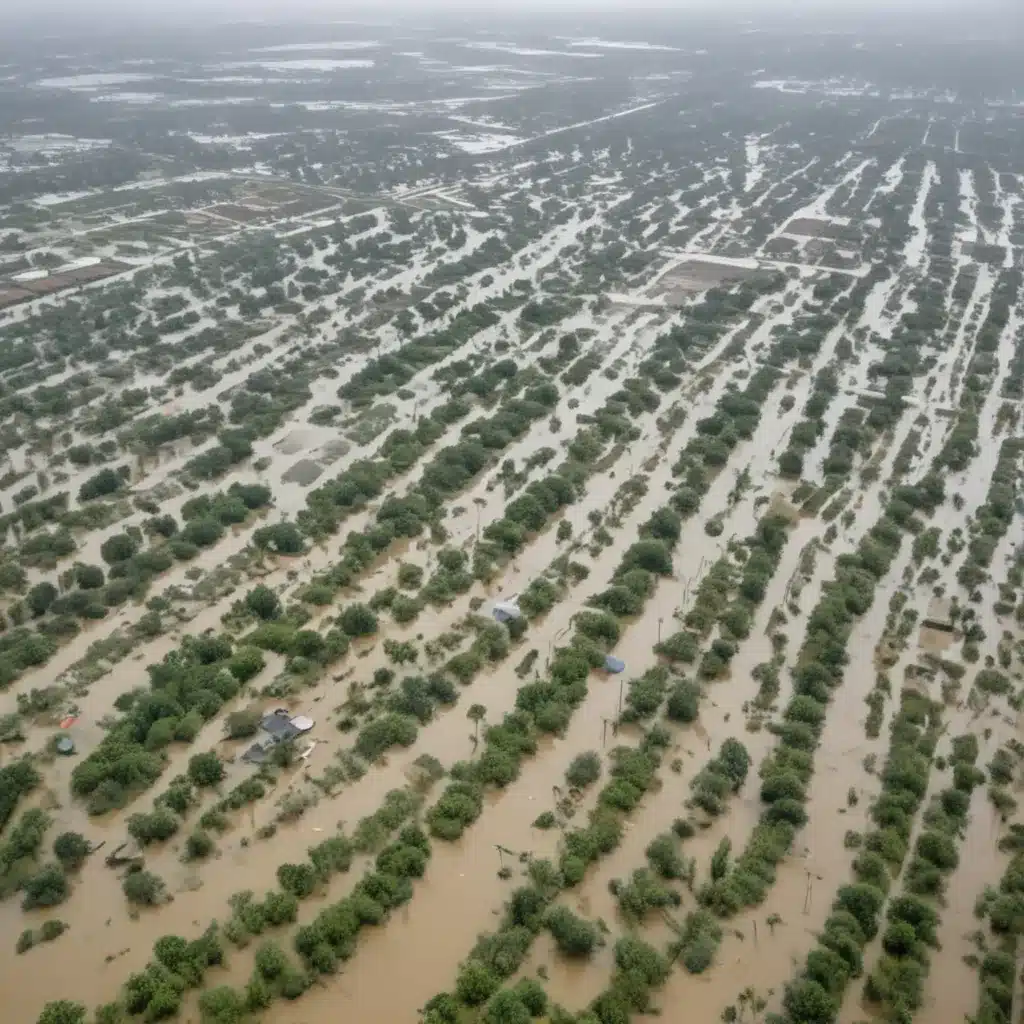
Adapting to a Wetter Future: Strategies for Flood-Resilient Landscapes
As climate change accelerates, many regions around the world are experiencing more frequent and intense rainfall events, leading to increasingly severe and widespread flooding. Adapting our landscapes to this “new normal” of a wetter future is a critical challenge facing flood control specialists, urban planners, and emergency management professionals alike.
Fortunately, a range of innovative strategies and technologies are available to help communities build resilience against the growing flood threat. By integrating structural flood control measures, sustainable stormwater management, and adaptive landscape design, we can create landscapes that not only mitigate flood risks, but also provide a wealth of co-benefits for the environment and local communities.
Flood Risk Assessment
The first step in building a flood-resilient landscape is to conduct a thorough flood risk assessment. This involves detailed floodplain mapping and analysis to identify areas most vulnerable to flooding, both now and in the future based on climate change projections and modeling.
Advanced tools like GIS-based inundation modeling can help visualize the potential extent and depth of flooding under different scenarios, accounting for factors like precipitation patterns, sea level rise, and changes in watershed hydrology. Vulnerability assessments can then pinpoint critical infrastructure, vulnerable populations, and environmental assets at risk.
With this data-driven understanding of flood hazards, communities can make informed decisions about the most appropriate flood control strategies to implement.
Structural Flood Control Measures
Traditional structural flood control measures, such as levees, detention basins, and floodwalls, continue to play a vital role in protecting communities from flood events. However, the design and construction of these “grey infrastructure” solutions might want to evolve to meet the challenges posed by a changing climate.
For example, levee design needs to factor in projections of more extreme rainfall and storm surge, ensuring adequate height and structural integrity to withstand future flood levels. Detention basins and reservoirs might want to be sized to accommodate larger volumes of stormwater runoff, while floodwalls and barriers should be strategically placed to provide the greatest protection for vulnerable areas.
Importantly, these structural flood control measures should be integrated with other ecosystem-based approaches and nature-based solutions to create a layered, multifunctional defense against floods.
Integrated Water Management
Effective flood control extends beyond just structural interventions; it requires a holistic, watershed-scale approach to stormwater management and water resource planning. This integrated water management strategy aims to mimic the natural hydrological cycle as much as possible, reducing the volume and velocity of stormwater runoff while also enhancing groundwater recharge and water quality.
Low-impact development (LID) techniques, such as permeable pavement, rain gardens, and bioswales, can be implemented at the site scale to reduce impervious surfaces and promote infiltration. Green infrastructure solutions, like urban wetlands and floodplain restoration, can be deployed at the neighborhood or community level to store and slow the movement of floodwaters.
Coordinating these stormwater management strategies across a watershed through regional planning efforts and floodplain zoning regulations can further optimize the performance of the overall flood control system. By aligning land use, infrastructure, and natural resource management, communities can build long-term resilience to flood risks.
Adaptive Landscape Strategies
In addition to structural and operational flood control measures, resilient landscape design is essential for adapting to a wetter future. This involves integrating flood-tolerant plants, soil and hydrology management, and multifunctional landscape elements to create spaces that can withstand and even thrive in the face of flooding.
When selecting plant species for flood-prone areas, native and flood-tolerant varieties are preferable, as they are better equipped to handle prolonged inundation and saturated soil conditions. Paying close attention to soil composition and site hydrology can also enhance the landscape’s ability to absorb and slowly release floodwaters.
Innovative design strategies, such as elevating critical infrastructure, incorporating temporary flood barriers, and creating flood-adapted public spaces, can further enhance a landscape’s resilience. By embracing the dynamic nature of water, these adaptive approaches transform flood-prone areas into multifunctional landscapes that provide a range of benefits, from stormwater management and habitat creation to recreational opportunities and community gathering spaces.
Emergency Preparedness and Response
Even the most robust flood control system cannot eliminate the risk of flooding entirely. Therefore, it is essential to have comprehensive emergency preparedness and response measures in place to protect lives and property when flood events occur.
Early warning systems, powered by real-time flood monitoring and forecasting, can provide critical lead time for communities to activate evacuation plans and implement temporary flood protection measures. Engaging the public through community education and outreach programs can also improve flood awareness and readiness.
In the aftermath of a flood, damage assessment and cleanup efforts, coupled with rebuilding and retrofitting strategies, can help communities recover more quickly and emerge even stronger. Ensuring access to insurance and funding assistance can also ease the financial burden on affected residents and businesses.
By integrating these emergency response capabilities with the broader flood control strategies, communities can develop a truly comprehensive and resilient approach to managing flood risks in the face of a wetter future.
Flood control specialists play a critical role in helping communities adapt to the growing threat of climate change-driven flooding. By combining structural flood control measures, integrated water management, adaptive landscape design, and emergency preparedness, we can create flood-resilient landscapes that not only protect lives and property, but also enhance the overall environmental, economic, and social well-being of our communities. To learn more about the latest flood control innovations and best practices, visit Flood Control 2015.
Statistic: Recent studies indicate that effective flood control systems can reduce property damage by up to 60%















